Phishing emails disguise themselves as trustworthy messages, posing a serious risk to your customers. To protect them, create a warning template that highlights key red flags. Emphasize checking the sender's address, being cautious with urgent language, and avoiding unexpected links or attachments. Encourage them to report suspicious emails promptly. Consider an engaging subject line to grab their attention and include a clear call to action. Remember, regular communication about these threats boosts awareness. Knowing the common mistakes to avoid can further enhance safety. If you're curious about crafting effective alerts, there's more valuable information ahead!
Key Takeaways
- Alert customers to check sender addresses for discrepancies and avoid clicking on links from unknown sources.
- Encourage vigilance by highlighting common phishing indicators, such as urgent language and poor grammar.
- Advise customers to verify requests through official channels rather than responding directly to suspicious emails.
- Recommend reporting any phishing attempts to designated authorities to contribute to community safety.
- Promote the use of strong passwords and multi-factor authentication to enhance personal account security.
Introduction
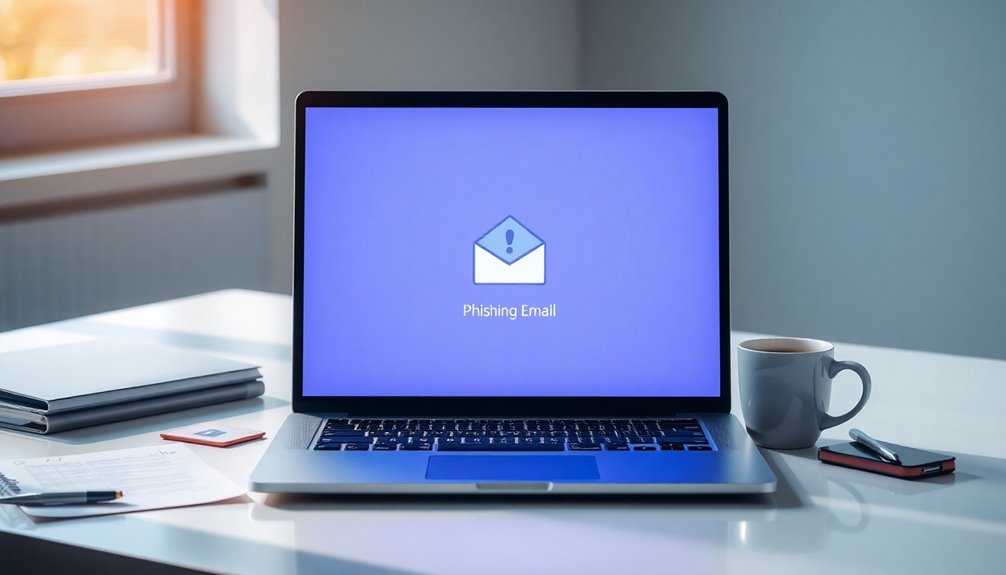
Phishing emails are a serious threat that can easily trap unsuspecting individuals and organizations. As you navigate your inbox, it's crucial to stay vigilant against these deceptive messages. With 1 in 99 emails being a phishing attack in 2023, the odds are alarmingly high.
These emails often impersonate legitimate organizations, using urgent language to provoke immediate responses. They may request personal information or prompt you to click on suspicious attachments, putting your information at risk.
Awareness is your first line of defense in cybersecurity. By recognizing the tactics used in phishing schemes, you can protect yourself and your organization from financial losses, which, according to the FBI, exceeded $1.75 billion due to business email scams in 2019.
In 2023, phishing attacks surged by 50%, highlighting an escalating threat landscape.
Always scrutinize emails for signs of phishing. If you encounter anything suspicious, don't hesitate to report suspicious emails to your IT department or email provider.
Staying informed and cautious can significantly reduce your vulnerability to these attacks, helping to safeguard your personal and organizational data.
Boosts Employee Vigilance Levels
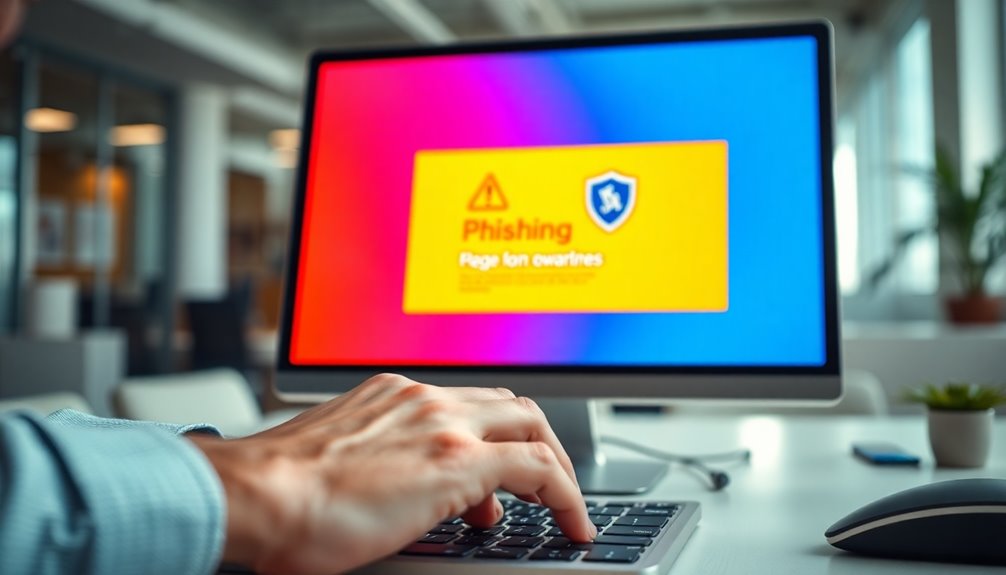
Training your employees in phishing awareness is essential for building a strong defense against cyber threats. Regular cybersecurity training equips your team with the skills to identify and avoid suspicious emails, significantly reducing the risk of falling victim to phishing scams. When employees know how to recognize phishing attempts, they become the first line of defense, protecting sensitive information and preventing potential financial losses.
Simulated phishing campaigns can further enhance employee vigilance levels by providing real-time feedback. This hands-on approach fosters a proactive security culture, encouraging your staff to remain alert to new threats. Statistics show that organizations with comprehensive phishing training programs experience up to a 70% reduction in click rates on phishing emails.
Ongoing education about evolving phishing tactics ensures your team stays informed and prepared. By maintaining high vigilance levels, employees can quickly identify suspicious activity and report it before it escalates into a serious issue.
Investing in phishing awareness training not only protects your organization but also empowers your employees to contribute actively to a safer digital environment. Together, you can effectively combat phishing threats and secure your organization's future.
Engaging Subject Line

In today's fast-paced digital landscape, crafting an engaging subject line is crucial for capturing your recipients' attention. A well-designed subject line creates urgency, prompting your audience to act. For example, using phrases like "Important Security Alert: Action Required!" instantly signals the importance of your phishing awareness emails, encouraging immediate engagement.
Incorporating action-oriented language such as "Protect Yourself from Phishing!" can significantly boost open rates. Personalized emails, especially those that include the recipient's name or specific account details, have shown to increase engagement by 26%. This personal touch makes your message feel relevant and immediate.
Utilizing clear and concise language is equally important. Avoid jargon and ensure your subject line conveys its purpose effectively. Studies reveal that 79% of consumers will only engage with messages that are straightforward and easy to understand.
Crafting Effective Phishing Alerts
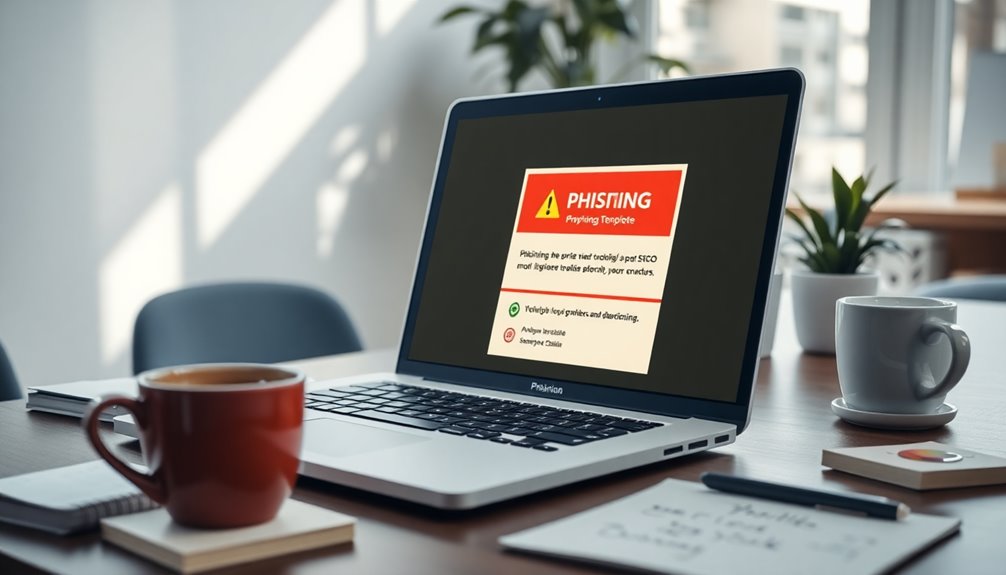
Recognizing the signs of phishing emails is just as vital as crafting an engaging subject line. When you receive a suspicious email, always check the sender's address for any discrepancies that could indicate a fraudulent source.
Look for common red flags, like urgent or threatening language, which often aims to pressure you into acting quickly.
To help you verify the authenticity of requests, consider contacting the sender directly using official communication channels instead of replying to the email. This simple step can prevent you from falling victim to malicious links and scams.
Make sure to stay informed about common tactics used in phishing emails, such as misspellings or generic greetings. Our security team is dedicated to keeping you updated on evolving phishing trends, reinforcing the importance of education and awareness in your defense against cyber threats.
If you encounter any suspicious emails, please forward them to our dedicated email address for reporting suspicious activity. Together, we can promote community vigilance and enhance overall security awareness, ensuring a safer online experience for everyone.
Pro Tips for Maximizing Impact

To effectively maximize the impact of your phishing email alerts, always prioritize clarity and urgency in your communication. Use clear subject lines, like "Important Security Update: Protect Yourself from Phishing Scams," to grab attention immediately.
Incorporating real-world examples of recent phishing attacks that targeted customers like yours creates a sense of urgency and highlights the risks they face.
Highlight the telltale signs of phishing emails, such as misspelled words and unfamiliar sender addresses. Providing practical tips helps customers easily identify potential threats. Encourage them to report suspicious emails to your designated support team or relevant authorities.
Empowering your customers to take proactive measures not only protects sensitive information but also fosters a culture of awareness.
Additionally, offer a downloadable resource, such as a checklist or guide. This will summarize key points for recognizing and reporting phishing attempts, enhancing customer awareness and preparedness against cybersecurity threats.
Common Mistakes to Avoid
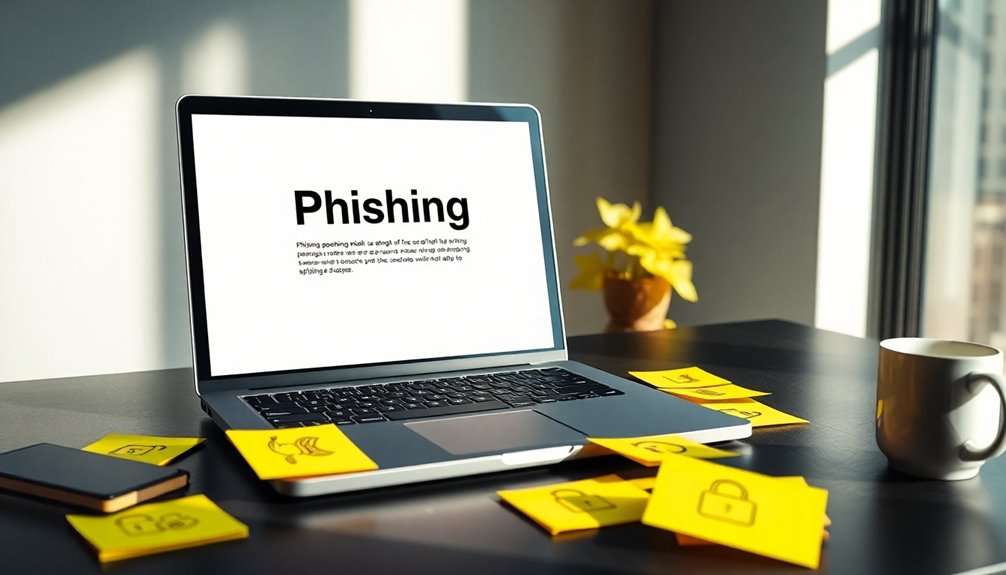
Avoiding common mistakes is crucial for protecting yourself from phishing attacks. One major error is failing to verify the sender's email address. Phishers often use slight variations in domain names to trick you into thinking an email is legitimate. Always check the details before responding or interacting. Furthermore, it's important to remain aware of AI's role in cybersecurity measures, as they can help identify and mitigate phishing threats.
Another frequent mistake is clicking on links or downloading attachments from unknown sources, which can expose you to malware or data breaches. AI technology can enhance detection capabilities, making it easier to spot suspicious activity.
Phishing attempts often employ urgent or threatening language to provoke hasty actions. Don't let pressure cloud your judgment; take a moment to think before acting. It's also important to watch for misspellings or poor grammar in emails, as these are common indicators of a phishing attempt.
Lastly, don't ignore the importance of reporting suspicious emails promptly. By doing so, you can help prevent further harm to others within your organization or community. Additionally, be aware that cybersecurity vulnerabilities can be exacerbated during incidents like major outages, making it even more crucial to remain cautious.
Always exercise caution when dealing with unfamiliar emails, and remember that protecting sensitive information starts with being aware of these common mistakes. Stay vigilant and safeguard yourself against potential threats.
Warning Email Template Example
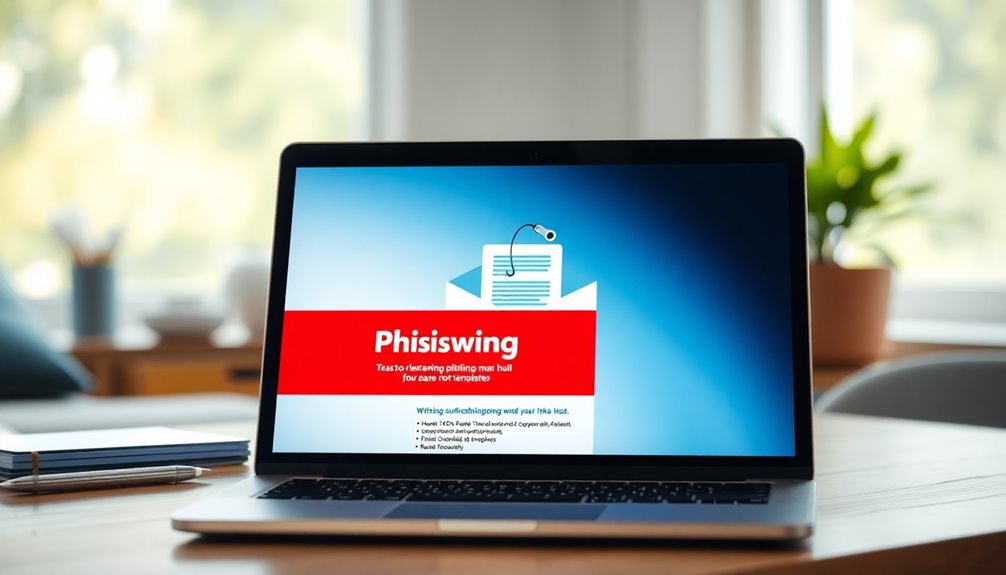
Phishing emails frequently look like legitimate communications, making it essential to know how to spot them. If you receive a phishing e-mail, you might notice unsolicited requests for sensitive information or poor grammar and spelling errors. Always take a moment to identify whether the email is genuine.
Verify the authenticity of the sender by checking the email address carefully, and never click on links or attachments from unknown sources.
Phishing emails often employ urgency tactics designed to provoke hasty decisions. Don't let pressure influence your judgment; take your time to assess the situation. If something feels off, trust your instincts.
It's crucial to report suspicious emails to us immediately. This enhances community awareness and helps protect sensitive information.
Additionally, we recommend updating your passwords on a regular basis and using multi-factor authentication whenever possible. These simple steps can significantly bolster your security against phishing attacks.
Final Thoughts

Being proactive about phishing awareness can make a significant difference in your online security. With phishing attacks increasing by 50% this year, it's crucial to understand how to protect your personal information.
You should familiarize yourself with common indicators of phishing, such as urgent language, poor grammar, and suspicious sender addresses. Training sessions can equip you with the skills to recognize and respond effectively to these threats.
Staying vigilant is essential, as even one moment of inattention could lead to significant financial loss or data breaches. Encourage your colleagues and friends to promote cybersecurity awareness within your community.
Reporting suspected phishing emails promptly not only protects you but also helps safeguard others from potential harm.
In this digital age, the responsibility lies with all of us to create a safer online environment. By investing time in training and maintaining an open dialogue about cybersecurity risks, you can play an active role in combating phishing attacks.
Frequently Asked Questions
How Do You Warn Customers of Phishing Emails?
You should warn customers about phishing emails by highlighting their urgency and deceptive nature. Encourage them to verify senders, check links, and report suspicious messages to your security team to prevent potential threats. Stay vigilant!
What Is an Example of a Phishing Warning?
An example of a phishing warning could state, "If you receive an email claiming to be from your bank asking for personal information, don't respond. Contact your bank directly to verify the request."
How to Alert Phishing Email?
To alert others about a phishing email, you should report it immediately to your IT department or the designated email address. Always include details like the sender, subject, and any suspicious links for investigation.
How Can Customers Protect Themselves From Phishing?
To protect yourself from phishing, always verify email senders, be cautious of urgent requests, hover over links before clicking, never share sensitive information, and regularly update passwords while enabling multi-factor authentication for added security.









